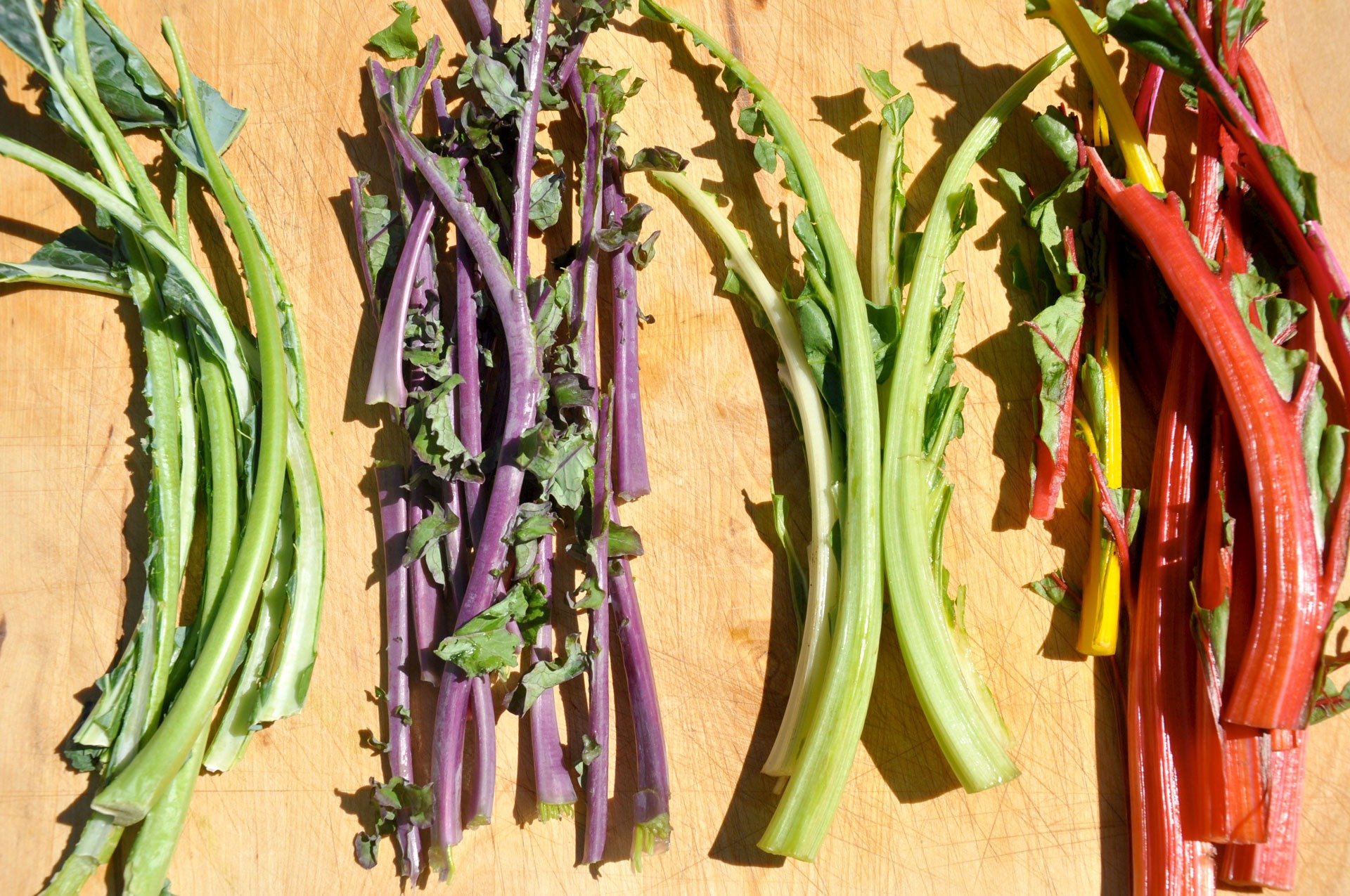Real Food Encyclopedia | Collard Greens
Collard greens (Brassica oleracea var. viridis) are so nutritionally virtuous it’s like putting money in the bank. Botanically, they are part of the Brassica oleracea family, which makes them relatives of all things cabbage-y: brussels sprouts, broccoli and cauliflower, to name a few. Collards are versatile and delicious, both cooked and raw.
Most Americans have come to associate collard greens with the American south and with the African slave trade. Although the historical and cultural connections are deep, the story of collards predates the American south (and the Atlantic slave trade) by a few thousand years. As food historian Michael Twitty explains, “Collards are not African, they are temperate and Eurasian in origin, but their consumption, and with them — turnip, kale, rape, mustard and other greens are a healthy blend of tastes — West and Central African, Scottish, Portuguese, German and the like. Many culinary historians agree that the green craze in the South is supported by tastes for spring greens among Celtic and Germanic Southerners but was really spearheaded by people of African descent.” You can read a bunch more about collard history on his blog.
Fun facts about collard greens:
- In Brazil, where they’re known as couve, collards figure into feijoada, the pork and bean stew that is the national dish. In Portugal, you might find them greening up a bowl of caldo verde, a potato and sausage soup, the country’s national dish. They are also a culinary staple in the Kashmir state of India, where they are known as haakh, and in Ethiopia, where they are known as gomen and remain part of the Jewish culinary tradition, according to culinary scholar Gil Marks in “Olive Trees and Honey.”
- The name collard is derived from the Middle English word colewort, which means “cabbage plant.” (At last, the mystery behind “coleslaw” is solved!)
What to look for when buying collard greens
Look for collards without yellowing, spots or wilted leaves — we want firm leaves and stems.
Sustainability of collard greens
Pesticides
Conventionally grown collards are a cause for concern, according to The Environmental Working Group. Due to pesticide use on leafy greens, collards show up as #19 in their Shopper’s Guide to Pesticides in Produce. Whenever possible, buy organic, particularly at the supermarket, to avoid insecticides. When shopping at the farmers’ market or farm stand, ask the growers about their production methods.
Seasonality
Although grown year-round, collards’ peak season is the first quarter of the year. Collards (and kale) actually benefit from frost, which causes them to produce sweeter leaves.
Eating collard greens
Storing
Stored in a kitchen towel in the refrigerator (away from fruit that continue to ripen after picking), collards will keep for at least three days. Do not wash until ready to cook.
Cooking
To remove the stems, trim with kitchen shears or a sharp knife, then thoroughly rinse under cold water. Collards tend to be silty, so do take care. Place all stemmed leaves in a mattress-like pile, fold up like a cigar and cut into thin ribbons.
“When it comes to collards, there’s a divide between the Ancients, who believe that collards have to be simmered for many hours in water to be digestible, and the Moderns, who claim to have invented braising collards lightly in a skillet,” said The Lee Brothers, Ted and Matt, in their “The Lee Bros. Southern Cookbook.” The bottom line is collards are delicious every which way. You can braise them slowly and for a long time (with a nice sustainably raised ham hock). Or even eat them raw in a salad. Check out Bryant Terry’s modern signature Citrus Collards Greens with Raisins. Or Michael Twitty’s recipe for a basic (and also kosher) braise.
Preserving
Hate to waste? Make stock. Cook those stems with a whole quartered onion, a few whole cloves of garlic and some black peppercorns and in 45 minutes, you’ve got the foundations for soups, stews and other projects. Freeze into ice cubes and you’re in business for weeks. Speaking of the freezer, you can pardon collards from a trip to the compost bin by blanching and freezing for later.
Nutrition
One cup of cooked collards contains 49 calories and 4 grams of protein. They are one of the best non-dairy sources of calcium, surpassing an 8-ounce serving of milk. Collards boast a unique trifecta: Anti-inflammatories in the form of omega-3 fatty acids and Vitamin K; Antioxidants in the form of beta carotene, Vitamins C and E and manganese; and detoxifiers in the form of glucosinolates, compounds that are being studied for their abilities to ward off cancer as well as cardiovascular disease.
The only reason not to eat your collards is if you’re taking blood thinners or you’ve got pre-existing gallbladder or kidney issues (collards are a considerable source of oxalates).
Top photo C.Schmitt/Adobe Stock.


